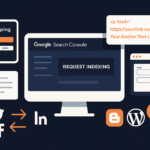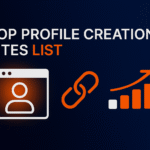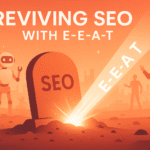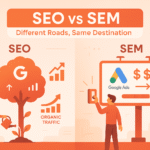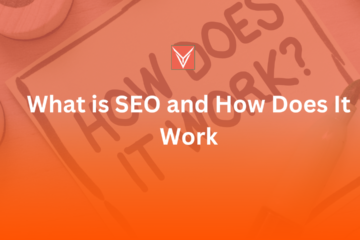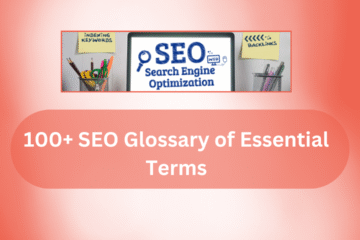Starting a website in 2025? This is the SEO Checklist for New Websites.
If you’ve ever considered how to get found on Google fast, you’re definitely not the only one.
Search engines’ algorithms have been changing so fast in recent years that if you use old tactics, they might not work for much longer. This is one of the reasons why keeping a good SEO checklist for new sites is not just convenient; it’s necessary.
In this post, we’ll show you the proven tactics every top SEO expert uses so you can crush the competition. Whether you’re a founder of a startup, a freelancer, or a business owner, this click-by-click guide will show you everything you need to know to optimize your website for SEO and your traffic, and never make an SEO mistake on Day 1.
Let’s get your site future-proof and provide Google exactly what it’s searching for.
1. Importance of Keyword Research
Want to get your website on Google? So, before you create a website, you need a plan and good keyword research. You have to speak the same language as your audience. That’s where keyword research can help. It’s kind of like finding the right words so the right people can find you online.
What is keyword research?
It’s determining what your audience is typing into Google when they search for your product, service, or content.

Say, you provide on-page SEO services, then, rather than pursue only “SEO,” you’d try for more specific keywords such as “SEO checklist for new website” or “on-page SEO service in Ambala.” These are long-tail keywords, and they will help you rank faster.
How to do keyword research (the easy way) :
- Make sure for keyword research you use a tool like Semrush, Agency dashboard, and Ahrefs to find out what those people are looking for on the internet. If you don’t know how to use tools for keyword research, let me know. I will make a detailed separate blog for this. Now let’s come to today, our main topic.
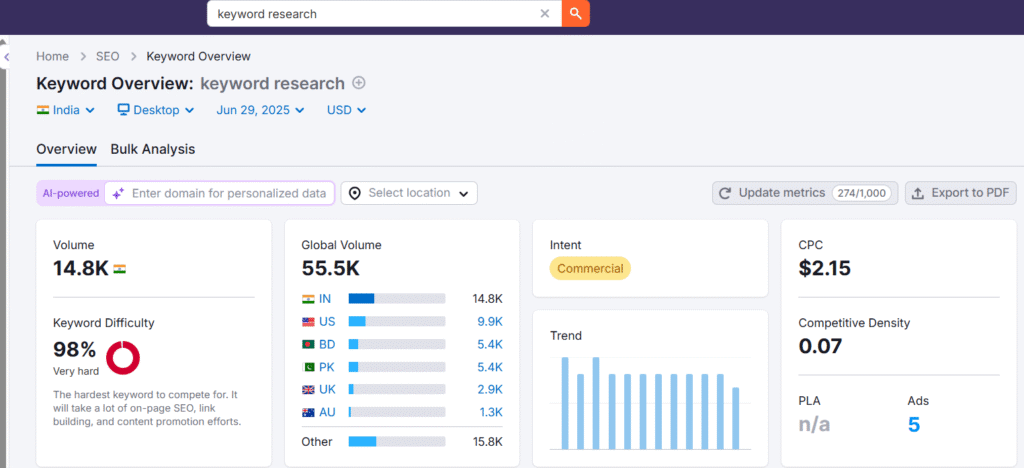
- Select one primary keyword for each page.
- Naturally, toss in a few relevant (synonymous) keywords.
- Ensure that your keywords are ones your audience is interested in.
Example: People typing in “how to fix a slow website” are not looking for a full course they simply want something quick and easy to do.
2. Domain & Hosting Setup Best Practices
Ensure there’s a strong foundation before you even write a single blog post. It begins with your domain and hosting.

Pick the right domain name:
- Short, clear, and easy to remember.
- Avoid numbers and hyphens.
- If it makes sense, throw in a keyword (e.g., onpageseoservices).
- Stick with. com if you’re going global.
Choose fast and reliable hosting:
- Check for 99.9% uptime and fast servers.
- Instead, opt for providers such as Hostinger are recommended to buy with discounted links.
- Make sure they offer customer support and easy scaling.
Don’t forget SSL (for security and SEO):
- It’s the little lock icon in the browser.
- Most hosts give you a free SSL certificate.
- Google recommends (and prefers) HTTPS sites—it’s a ranking factor.
Bonus: Content Delivery Network (CDN) and speaking of serving, use a CDN.
It makes your website load quicker for folks who live in other countries of the world. The likes of Cloudflare make this a push-button operation.
3. On-Page SEO Optimization
Now that you’ve got your site set up, it’s time to let Google know what each page is about. That’s what on-page SEO does.
Here’s how to do it:
- Tag Title: This tag apear in the search result page. Just make sure you keep the meta title length to 55-60 characters only. You don’t need to increase the limit and try to include your main keyword.
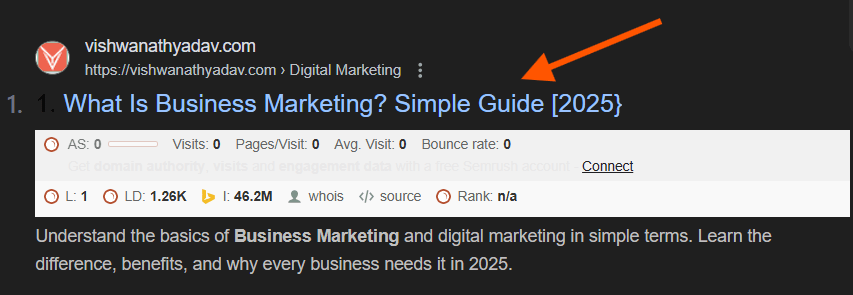
- Meta Description: A short paragraph that appears below your headline. Keep it to no more than 160 characters, This is the maximum limit and make it clickable.
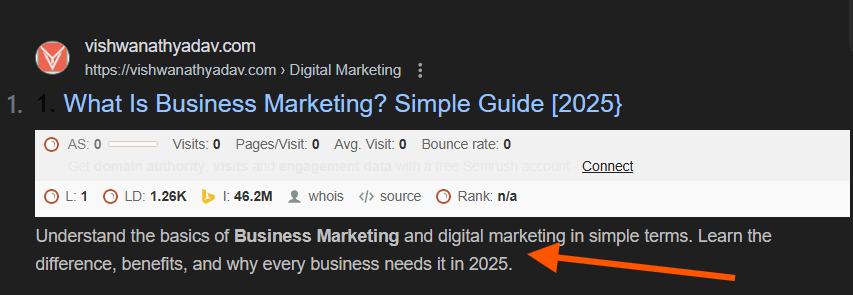
- Headings (H1, H2, H3): Give good headings to separate the content. Include your keyword in at least one of these.

- Content: Write content for humans first. Add the quick description in your blog, provide the direct answer to the users, which helps to rank on AI. You need to put your targeted keywords naturally in your content, answer the user’s question, and solve the user’s query. Make sure your content is easy to understand for humans.
- Internal Links: Internal links are links that lead from one of your website’s pages to another page on the same domain. For example, if you have a blog post that links to both your homepage and to another service page within that blog, that’s an internal link.

- Alt Text: Alt text is a brief description for an image to help Google figure out what the image is about. It also enhances image SEO and makes your images rank on Google Images and drive more traffic.
Here’s a good analogy: On-page SEO is like setting up a store—clear signs, labeled sections, and a nice path to what the big community wants.
4. Technical SEO Foundation
You can’t see technical SEO, but it makes a huge difference. It’s all the behind-the-scenes stuff that helps Google find, understand, and rank your website.
Do these 5 things first:
- Connect your site to Google Search Console
- Submit your website to GSC and verify your ownership.
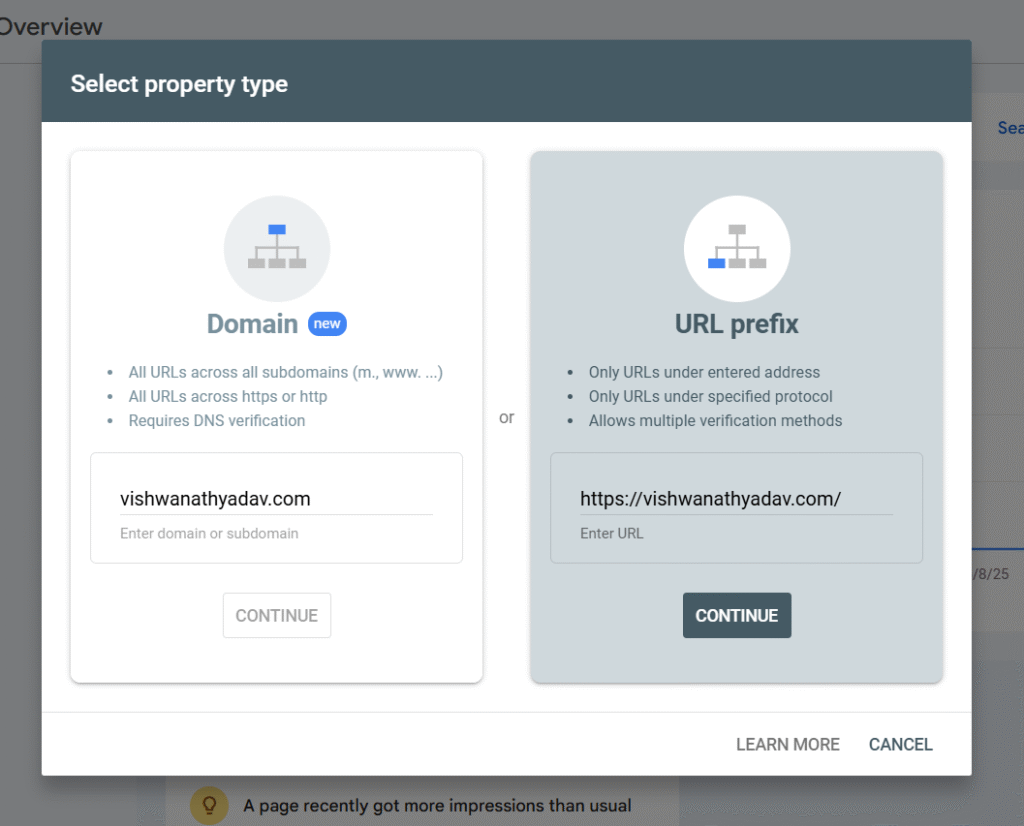
- Upload your sitemap
- Track errors and performance
- Create and submit a sitemap
- A sitemap tells Google which pages to read
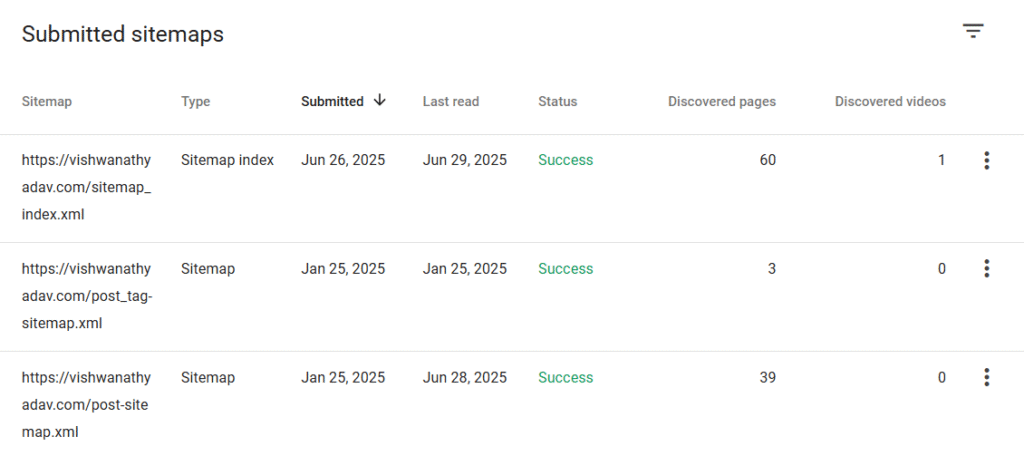
- Use a plugin like Rank Math or Yoast SEO, which will help in generating a sitemap automatically.

- Check and fix the crawl errors and Broken Links.
- Time to time, check your website and use audit tools like semrush, SiteCheckup, and Ahrefs.
- Redirect or update broken pages
- The website should be responsive and mobile-friendly
- Most visitors use their phones
- Use responsive design and test on Google’s Mobile-Friendly tool
- Speed it up
- Compress images: for this, I use the Tiny PNG plugin, which helps to reduce the image automatically.

- Use caching and a lightweight theme
- Properly optimize your website speed on Google PageSpeed Insights or GTmetrix
5. Content Strategy for Ranking
Good content = higher rankings + more trust + more leads. But not just any content — it must be helpful, specific, and easy to grasp.
What is SEO content in 2025?
- Write seo optimized content and understand what your audience is searching for and what problems they are facing, and provide a solution from your content.
- Answer questions early: Great for Google snippets and voice search.
- Make use of headers and bullets: Make blocks out of content.
- Insert visual elements: Photos, graphs, reels, or short videos are great for explaining things quickly.
Use AI as a helper, but don’t make it a writer:
You can use the AI to create outlines and plans. But don’t use it as a writer.
Keep your content updated:
SEO isn’t a one-time task. Review your top pages every few months to:
- Refresh stats and examples
- Add new tips
- Improve clarity
Pro tip: Include content that’s easy to backlink to — such as a step-by-step guides, checklists or case studies.
6. Link Building for Authority
Backlinks are upvotes from other websites, in a sense. The more good sites that link to your site, the more credible you appear to Google.
Easy ways to build links:
- Get listed in directories: Start with Google Business, Clutch, JustDial, or local listings.
- Use HARO: Sign up at Help A Reporter Out and reply to journalists’ questions. If they quote you, you get a backlink.
- Write guest posts: Contribute helpful content to other related blogs. Insert a link to your site. Pages allow curation of your best content.
Also, must read: Does Guest Blogging Still Work for SEO
- Produce useful content: Write blog posts or tools that others would naturally want to link to.
Also, you must read: How Backlinks are Important for SEO in 2025
Don’t forget internal linking:
Link between your pages to keep readers engaged and help Google understand your site’s structure.
7. Local SEO Setup
If you service a particular city or area, local SEO makes sure you show up in local searches and on Google Maps.
Here’s how to do it:
- Google Business Profile: Create, confirm your details, and post photos.
- NAP consistency: Your Name, Address, and Phone number need to be consistent at all places.
- Get reviews: Tapping satisfied customers to write Google reviews is a good place to start.
- Use local keywords: Example: “best eye specialist in Ambala” or “digital marketing in Delhi.”
Also, Must Read: Why digital marketing is important for small businesses
- Add local schema: I see most organizations/companies not using local schema, organization schema. So, please use schema markup to show your location info to google.
Local SEO = more calls, more visits, more trust.
8. SEO Tools & Automation
Why do it all manually when smart tools can save time and improve results?
Top tools to use:
- Google Search Console & GA4 – Monitor traffic, errors, and rankings
- Semrush / Ahrefs – There is keyword research and backlink tracking, and competitor analysis… and so on…
- Rank Math / Yoast SEO – On-page optimization
- Screaming Frog – Find crawl issues
Use AI tools to speed up content:
- ChatGPT for outlines and ideas
- Surfer SEO for optimization suggestions
- Frase for content briefs
You should do a short audit of your website at least once a week/month.
Reminder: Tools are supposed to help you, not to think for you.
9. Analytics and SEO Monitoring
Can’t improve what you don’t measure. Establish the right tools to track what’s working — and what isn’t.
What to monitor:
- Traffic sources: Where your visitors come from
- Top pages: Which pages get the most views
- Bounce rate: Are people bouncing fast?
- Conversions: Are you getting people to make a purchase, call you, or sign up?
Use these tools:
- (GA4) Google Analytics 4
- Google Search Console
- Keyword tracking tools (like Semrush)
Do monthly SEO checkups:
- Fix broken links
- Refresh old content
- Update keywords
- Recheck rankings
Think of SEO like going to the gym: It’s consistency over intensity.
You’re now ready to grow.
Want help getting started? Get in touch for a complete website audit service or on-site SEO optimisation — you can thank me later.
If you want a certain ending, FAQs, and meta tags next, please let me know!
Wrapping It Up:
Creating a new website is fun, but moving it up on Google? That takes smart planning.
If you have read this blog till now. You are very serious about your project/website. I hope you now know how to optimize pages, how to optimize meta tags, and what things you need to keep in mind before building a website. Also, you know the best way to find the right keywords and how to create a website that Google can easily understand.
But here’s the deal with SEO: It’s not a checklist, it’s a long-term strategy. So ask yourself:
- Are you optimizing your site with purpose?
- Are you measuring what’s working and what’s not working?
If not, now is the time to pay attention to it. If you don’t know what on-page SEO optimization is, want to have your website audited, or need a full site audit service, connect with me. This is a smart move to boost your rankings.
Frequently Asked Questions (FAQs)
What is the most important SEO task for new websites?
Start with keyword research and technical SEO setup. These create the foundation for Google to understand and index your content correctly.
How do I rank my new website on Google fast?
Follow a complete SEO checklist: do keyword research, fix technical issues, optimize pages, create useful content, and build quality backlinks.
How long does it take for SEO to work on a new website?
You may see early results in 2–3 months, but real growth usually takes 4 to 6 months. SEO is a long-term game with lasting results.
What tools do I need for SEO in 2025?
You need tools like Google Search Console, GA4, Semrush, or Ubersuggest. Also, use AI tools like ChatGPT or Surfer SEO to speed up content planning.
Is local SEO important for small businesses?
Yes! If you want local customers to find you on Google Maps or “near me” searches, local SEO (Google Business, NAP, reviews) is essential.


